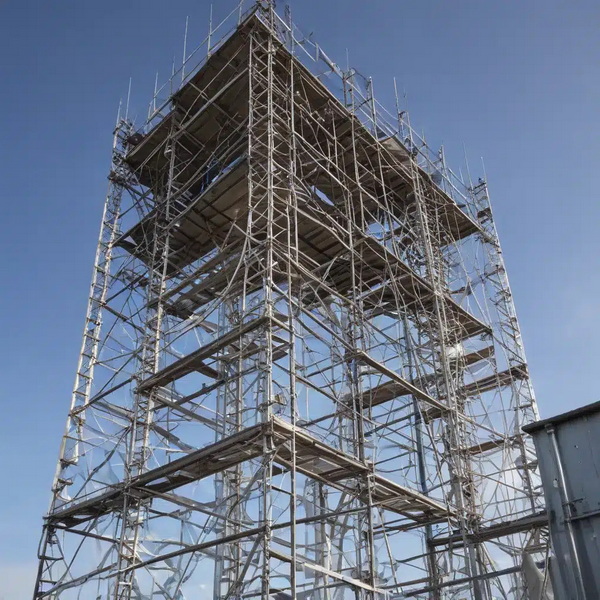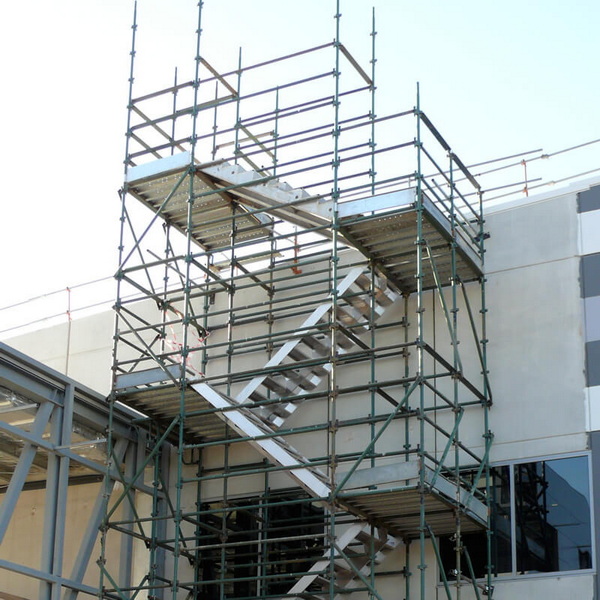Content Menu
● Understanding Scaffold Tower Height
● Key Definitions: Platform vs. Working Height
● Maximum Height Standards
>> General Limits
>> Regulatory Benchmarks
● Factors Influencing Scaffold Tower Height
● Safety Protocols for Tall Scaffold Towers
>> Critical Requirements
>> Assembly Best Practices
● International Regulations
● Case Studies: Extreme and Practical Applications
>> Extreme: SkyScraper Tower
>> Practical: Residential Use
>> Commercial Construction
● Step-by-Step Guide to Safe Scaffold Tower Assembly
>> 1. Site Preparation
>> 2. Gather and Inspect Components
>> 3. Assemble the Base
>> 4. Level the Structure
>> 5. Add Platforms and Bracing
>> 6. Install Guardrails and Toeboards
>> 7. Attach Stabilizers or Outriggers
>> 8. Final Inspection
● Common Mistakes and Troubleshooting
>> Common Errors
>> Troubleshooting Tips
● Innovations in Scaffold Tower Design
● Conclusion
● FAQ
>> 1. What is the difference between platform height and working height?
>> 2. Can I exceed 12 meters with a scaffold tower?
>> 3. Are height limits different indoors vs. outdoors?
>> 4. What safety gear is required for tall towers?
>> 5. How often should scaffold towers be inspected?
Scaffold towers are indispensable for safe work at height in construction, maintenance, and industrial projects. But determining their maximum safe height involves balancing technical specifications, regulatory requirements, and environmental factors. This comprehensive guide explores the limits of scaffold tower height, supported by diagrams, real-world examples, and expert insights.

Understanding Scaffold Tower Height
A scaffold tower is a modular structure assembled from frames, braces, platforms, and stabilizers. Unlike fixed scaffolding, these towers are freestanding and often mobile. Their height is determined by:
- Design: Aluminum vs. steel components.
- Configuration: Single-width (0.85m) vs. double-width (1.44m) bases.
- Use Case: Indoor vs. outdoor environments.
Scaffold towers are used for a wide range of applications, from painting and window cleaning to large-scale industrial maintenance. Their modular nature allows for quick assembly and disassembly, making them ideal for projects where flexibility and mobility are crucial.
Key Definitions: Platform vs. Working Height
| Term | Definition | Example (12m Tower) |
| Platform Height | Vertical distance from ground to the top platform. | 12 meters (39 feet) |
| Working Height | Platform height + 2 meters (average worker's reach). | 14 meters (46 feet) |
Platform height is the actual height of the top platform where a worker stands, while working height adds the average reach of a person (about 2 meters), representing the highest point a worker can safely access.
Maximum Height Standards
General Limits
- Standard Towers: 10–12 meters (33–39 feet) platform height.
- Outdoor Use: 8 meters (26 feet) free-standing, 12 meters if tied to a structure.
- Indoor Use: Up to 12 meters free-standing.
"A scaffold tower built with typical components can achieve a maximum height of around 10 to 12 meters."
Regulatory Benchmarks
- UK (EN 1004): Requires stabilizers for mobile towers and platforms at 2m intervals.
- OSHA (US): Mandates a 4:1 height-to-base ratio for freestanding towers.
- Singapore: Limits aluminum towers to 12m indoors and 8m outdoors.
- Australia/NZ: Requires wind load calculations and tie-ins for towers over 3x base width.
Factors Influencing Scaffold Tower Height
1. Base Dimensions
- A 4:1 height-to-base ratio is critical for stability (e.g., 12m height requires a 3m base).
- Double-width bases allow greater heights than single-width.
2. Environmental Conditions
- Wind speeds over 31 mph (50 km/h) require dismantling outdoor towers.
- Indoor towers avoid weather risks but need ventilation checks.
3. Component Quality
- Use only undamaged, certified parts.
- Aluminum towers (lightweight) vs. steel (heavy-duty).
4. Tie-Ins and Stabilizers
- Towers tied to buildings can exceed free-standing limits.
- Stabilizers reduce sway by 40% in tall configurations.
5. Load Capacity
- Exceeding the maximum load can cause collapse. Always factor in the weight of workers, tools, and materials.
6. Ground Conditions
- Uneven or soft ground can destabilize even a properly assembled tower. Use adjustable legs and base plates as needed.
Safety Protocols for Tall Scaffold Towers
Critical Requirements
- Guardrails & Toeboards: Mandatory on all platforms to prevent falls and falling objects.
- Fall Protection: Harnesses required beyond 6 feet (1.8m) in the US.
- Inspections: Daily checks and weekly documented assessments.
- Safe Access: Use built-in ladders or trapdoor platforms for internal access.
- Weather Precautions: Never use towers in high winds, storms, or icy conditions.
Assembly Best Practices
- Follow the 3T (Through the Trapdoor) or AGR (Advance Guardrail) systems.
- Never stand on unprotected platforms during assembly.
- Always assemble towers with at least two people for safety and efficiency.
- Tag the scaffold as safe or unsafe using a visible tagging system.

International Regulations
| Country | Standard | Key Requirements |
| UK/EU | EN 1004 | Stabilizers mandatory; platforms every 2m; trapdoor access. |
| USA | OSHA 1926 Subpart L | 4:1 height-to-base ratio; guardrails above 10 feet. |
| Singapore | SS 659:2020 | 12m indoor, 8m outdoor limits for aluminum towers. |
| Australia/NZ | AS/NZS 1576 | Wind load calculations; tie-ins for towers over 3x base width. |
Case Studies: Extreme and Practical Applications
Extreme: SkyScraper Tower
- Height: 550 feet (167.6 meters).
- Use: Industrial projects requiring sectional assembly.
- Features: Self-supporting with tie-backs and lightweight components.
- Safety: Requires professional engineering, tie-ins, and advanced stabilizers.
Practical: Residential Use
- Height: 6–7 meters.
- Tasks: Gutter repairs, window cleaning, painting.
- Safety: Double-width base with stabilizers, platforms every 2 meters, and full guardrails.
Commercial Construction
- Height: 8–12 meters.
- Tasks: Facade repairs, HVAC maintenance, signage installation.
- Safety: Regular inspections, wind monitoring, and compliance with local regulations.
Step-by-Step Guide to Safe Scaffold Tower Assembly
1. Site Preparation
- Clear the work area of debris and obstructions.
- Check for overhead hazards like power lines.
- Ensure the ground is level and firm.
2. Gather and Inspect Components
- Lay out all parts and check for damage or wear.
- Confirm all locking pins, braces, and platforms are present.
3. Assemble the Base
- Insert casters or base plates into adjustable legs.
- Lock wheels if using a mobile tower.
- Connect the first set of vertical frames and secure with cross braces.
4. Level the Structure
- Use a spirit level to check for plumb and level.
- Adjust legs or casters as needed.
5. Add Platforms and Bracing
- Install the first platform at the lowest level.
- Add additional frames and braces, securing each level before proceeding.
- Place intermediate platforms every 2 meters for safe ascent.
6. Install Guardrails and Toeboards
- Fit guardrail posts and attach guardrails at the top platform.
- Install mid-rails and toeboards for fall protection.
7. Attach Stabilizers or Outriggers
- Fit stabilizers at the base to prevent tipping.
- Ensure all stabilizers are in full contact with the ground.
8. Final Inspection
- Check all connections and braces.
- Inspect for level, plumb, and stability.
- Tag the tower as safe for use.
Common Mistakes and Troubleshooting
Common Errors
- Skipping Inspections: Increases risk of collapse or injury.
- Improper Base Setup: Leads to instability.
- Missing Guardrails/Toeboards: Major fall hazard.
- Overloading: Exceeding weight limits can cause structural failure.
- Incorrect Bracing: Reduces rigidity and safety.
- Using Damaged Components: Always replace bent, cracked, or corroded parts.
Troubleshooting Tips
- Tower Leans or Sways: Re-level the base, check all braces, and add stabilizers.
- Difficulty Assembling Components: Check for damage or incorrect parts; only use compatible components.
- Weather Hazards: Dismantle or lower the tower in high winds or storms.
- Platform Access Issues: Always use the internal ladder and trapdoor platforms for safe ascent and descent.
Innovations in Scaffold Tower Design
1. Lightweight Composites: Carbon-fiber frames reduce weight by 30%, making assembly easier and safer.
2. Smart Sensors: Monitor wind speed, load, and tilt in real time, alerting users to unsafe conditions.
3. Self-Assembling Systems: Robotic arms for hazardous environments, reducing human risk.
4. Quick-Connect Components: Color-coded, tool-free assembly for rapid setup and error reduction.
5. Digital Inspection Logs: Mobile apps for documenting inspections and maintenance.
Conclusion
The maximum safe height of a scaffold tower depends on its design, base dimensions, and compliance with regional regulations. For most applications, 10–12 meters (33–39 feet) is the practical limit, while specialized systems like the SkyScraper can reach 550 feet (167.6 meters). Prioritize manufacturer guidelines, stabilizers, and daily inspections to ensure safety. Falling from height remains a leading cause of workplace fatalities, making adherence to protocols non-negotiable. Always use the right equipment, follow best practices, and never exceed the recommended limits for your scaffold tower.

FAQ
1. What is the difference between platform height and working height?
Platform height is the distance from the ground to the top platform. Working height includes an additional 2 meters for worker reach.
2. Can I exceed 12 meters with a scaffold tower?
Only with engineered systems like the SkyScraper, which require professional assembly and tie-ins. Standard towers must not exceed manufacturer limits.
3. Are height limits different indoors vs. outdoors?
Yes. Indoor towers can reach 12 meters freestanding, while outdoor towers are limited to 8 meters without tie-ins due to wind risks.
4. What safety gear is required for tall towers?
Guardrails, toe boards, harnesses (above 6 feet in the US), and stabilizers.
5. How often should scaffold towers be inspected?
Before each use, after extreme weather, and every 7 days on construction sites.






















